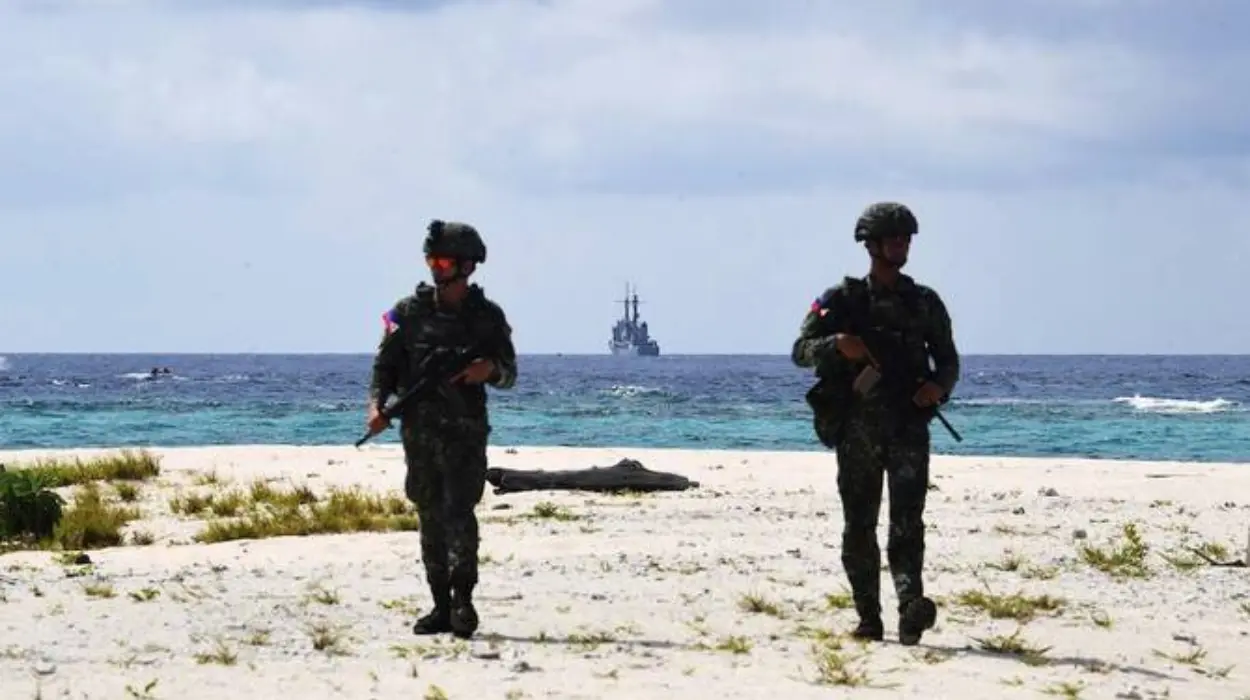Beijing (Parliament Politics Magazine) – China’s military says it monitored a Philippine joint patrol in the South China Sea, labeling the action provocative and pledging to defend its territory.
As reported by Reuters, China’s military said it monitored a Philippine-led joint patrol in the disputed South China Sea on October 30 and 31.
What did the PLA warn about the recent South China Sea patrol?
Tian Junli, a spokesperson for the People’s Liberation Army’s Southern Theater Command, said the joint patrol with unnamed partners “seriously undermined regional peace and stability.”
He described the Philippines as a troublemaker in the region.
In a statement, Mr Junil added,
“The theater forces remain on high alert and will resolutely safeguard national territorial sovereignty and maritime rights and interests.”
In September, China’s military carried out routine patrols in the South China Sea, following joint US-Philippines naval exercises in the area.
It said,
“We sternly warn the Philippine side to immediately stop provoking incidents and escalating tensions in the South China Sea, as well as bringing in external forces for backing such efforts that are destined to be futile. Any attempt to stir up trouble or disrupt the situation will not succeed.”
The PLA warning came after the US, Japan, and the Philippines conducted joint maritime exercises in the Philippines’ EEZ.
What actions did the China Coast Guard take in disputed waters?
According to the China Coast Guard, a law enforcement patrol was carried out in the territorial waters around Huangyan Dao.
It said in a statement,
“Since October, the CCG has continuously strengthened law enforcement patrols in the island’s waters, carrying out tracking and monitoring, radio warnings, and the interception and expulsion of vessels and aircraft involved in illegal intrusion and provocation, in accordance with laws and regulations.”
The statement added,
“These actions further enhance control and management of the relevant maritime areas and firmly safeguard China’s national territorial sovereignty and maritime rights and interests.”
What did the US Indo-Pacific Command say about freedom of navigation?
The US Indo-Pacific Command said joint maritime activities were carried out from September 11 to 13 to strengthen regional and international cooperation.
It added,
“The U.S., along with our allies and partners, upholds the right to freedom of navigation and overflight and other lawful uses of the sea and international airspace, as well as respect to the maritime rights under international law.”
How did Marco Rubio criticize China’s plans for Scarborough Reef?
US Secretary of State Marco Rubio said China’s plans for the disputed feature are “destabilizing.”
He added,
“Beijing claiming Scarborough Reef as a nature preserve is yet another coercive attempt to advance sweeping territorial and maritime claims in the South China Sea at the expense of its neighbors.”
How did Pete Hegseth describe the new South China Sea task force?
The US and Philippine defense secretaries announced a new task force on October 31, aimed at deterring China and boosting joint defense cooperation.
US Defense Secretary Pete Hegseth and Philippine Secretary of National Defense Gilbert Teodoro revealed “Task Force Philippines” on Friday at the Association of Southeast Asian Nations’ Defense Ministers Meeting Plus in Kuala Lumpur, Malaysia.
Mr Hegseth added,
“We’re publicly announcing the Task Force Philippines, here with you today, which will be another step in our cooperation. Increasing interoperability, exercising and preparedness for contingencies―so that we can decisively respond to crisis or aggression and reestablish deterrence in the South China Sea.”
Why are China and the Philippines clashing over maritime claims?
The core issue between China and the Philippines in the South China Sea involves conflicting sovereignty claims over maritime features and waters.
Both countries claim sovereignty over key reefs and shoals, most notably Scarborough Shoal (known as Huangyan Dao in China) and the Second Thomas Shoal.
The disputed areas are scenes of recurrent and dangerous incidents. The Chinese Coast Guard and maritime militia vessels often shadow, block, and use water cannons against the Philippine government and supply vessels.


